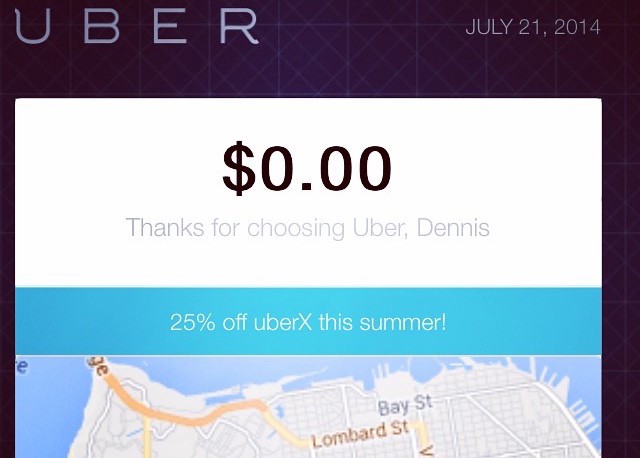Uber’s Misclassifications and the Sharing Economy

The California Labor Commission has ruled that a former Uber driver named Barbara Ann Berwick should have been classified as an employee and not an independent contractor. In an interview with The New York Times, Berwick says she worked 60 to 80 hours a week between July and September 2014, earning a total of about $11,000 before expenses and taxes:
“If you work it out, if I didn’t get compensated for expenses, I’d be working for less than minimum wage,” Ms. Berwick said. So she said she decided to file a claim against Uber last September with the California Labor Commission for overtime, expenses and interest, setting in motion the events that led to the ruling.
Uber has long argued that it is merely a logistics company that connects riders with drivers who use their own cars and work their own hours. “It’s important to remember that the number one reason drivers choose to use Uber is because they have complete flexibility and control,” says an Uber spokesperson.
The California Labor Commission’s ruling says otherwise. The reasons include:
• Uber can deactivate a driver’s app simply if the driver is inactive for 180 days, or if she does not maintain at least a 4.6 star rating.
• An Uber driver using her own vehicle doesn’t mean much; people who deliver pizza are held to be employees of a pizzeria and they are also often asked to use their own cars and pay for their own insurance. Uber also insists that drivers register their cars with them, and that the cars can’t be older than 10 years old.
• Though Uber insists it’s a logistics company, its central business is to provide transportation services, and Uber drivers are in charge of doing just that. As the commission puts it: “Without drivers such as Plaintiff, Defendant’s business would not exist.”
• Uber has a lot of control over how much drivers can earn, setting commission and cancellation fees, and discouraging drivers from accepting tips because it would be counterproductive to the company’s marketing strategy.
Beyond the ruling, Uber often tells drivers what they can or cannot do; in China, Uber drivers were recently told to stay away from taxi protests and threatened to punish those who disobeyed. Doesn’t this sound like a directive from an employer?
Uber is not the only one who views the commission’s ruling as a bad thing. Christopher Koopman, a research fellow at George Mason University who is working on the “Project for the Study of American Capitalism,” writes that this is a huge blow to the sharing economy and will affect consumers, competition and innovation.
For Uber, as well as other sharing economy firms, designating drivers as employees rather than contractors would involve enormous costs. These firms would be on the hook for items such as overtime pay, unemployment insurance, workers’ compensation for job-related injuries, Social Security benefits, and family leave. Uber, Lyft, and Sidecar could also be forced to reimburse drivers for operating expenses, which could include ordinary maintenance, repairs, as well as the cost of fuel, tolls, and other costs related to driving.
Ultimately, by increasing the costs of operation, this will only serve to reduce the number of drivers who can participate in these ridesharing platforms, increase prices for customers, and shrink the size of the pie for all involved in the sharing economy.
I’ve written about Uber before, and have criticized the company for its treatment of its drivers. So you won’t be surprised to read that I find the argument that providing drivers with benefits like workers’ compensation for job-related injuries (i.e. car accidents!) will kill the sharing economy perplexing — as if the sharing economy can only exist on the backs of contract workers who have little leverage when it comes to fair employment practices; as if raising prices means we’ll no longer have the ability to use an app to get a ride. Cheap rides may be good for customers, but they come at a cost absorbed by workers (see also: cheap manicures). Surge-pricing has already created cost fluctuations for customers, anyway. I’d actually be more inclined to use the service knowing that the workers had some level of protection.
Koopman must be posturing a bit, since he knows this isn’t the first time a state has ruled that an Uber driver must be classified as an employee. Uber has also pointed out that other states, including Georgia, Pennsylvania, and Texas, have ruled in the opposite direction, arguing that drivers are independent contractors. The pendulum has swung in both directions.
One last consideration: Classifying Uber drivers as employees and giving them benefits will do less to reduce the number of drivers who can use the app than a self-driving car future — which Google says will be available to consumers by 2020 — will. Uber is, of course, appealing the ruling, and they are biding their time.
Photo: Dennis Yang
Support The Billfold
The Billfold continues to exist thanks to support from our readers. Help us continue to do our work by making a monthly pledge on Patreon or a one-time-only contribution through PayPal.
Comments